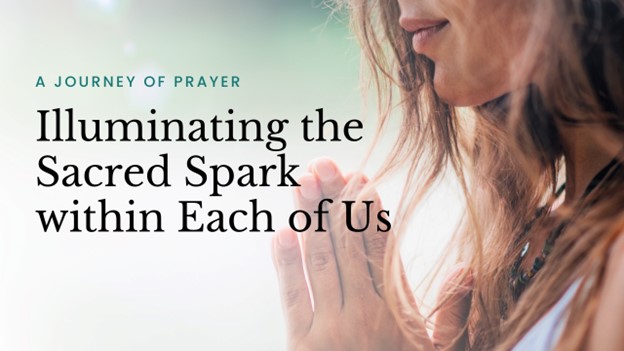A Journey of Prayer: Illuminating the Sacred Spark within Each of Us

Originally published on Patheos.
I’ve been praying nearly as long as I’ve been breathing. Some of my young prayers were the “now I lay me down to sleep” kind, while others were more personal and reflected an early knowing that the Holy is not living on a cloud above me but is always close enough to hear my inner hopes and concerns.
What is prayer, really?
Prayer is a sacred practice found in various spiritual traditions. It’s a pathway to connect with the Divine and seek solace, guidance, and understanding. The way we approach prayer can profoundly shape our spiritual journey. I’ve experienced two ways of praying. The first is to pray to a source outside myself. The second is to perceive oneself as a living expression of God and pray through inner contemplation. Experience tells me both styles of prayer are transformative, but for today, let’s consider the second style.
How do we know the Holy can be found within?
While different spiritual traditions may interpret and express the concept of inner divinity in various ways, there are a few scriptural references from different faiths that allude to the idea of the divine essence residing within individuals.
Here are a few examples:
- Christianity – 1 Corinthians 3:16 (NIV): “Do you not know that you are a temple of God and that the Spirit of God dwells in you?”
- Hinduism – Bhagavad Gita 10.20 (Translation by Swami Sivananda): “I am the Self, O Gudakesha, seated in the hearts of all creatures. I am the beginning, the middle, and the end of all beings.”
- Islam – Quran 50:16 (Translation by Saheeh International): “And We have already created man, and We know what his soul whispers to him, and We are closer to him than [his] jugular vein.”
- Buddhism – Dhammapada 153 (Translation by Acharya Buddharakkhita): “By oneself is evil done; by oneself is one defiled. By oneself is evil left undone; by oneself is one purified. Purity and impurity depend on oneself; no one can purify another.”
Certainly, it’s important to note that interpretations of scriptures may vary among different individuals and communities within each faith tradition. Yet, when you combine these scriptural passages, they reflect a universal concept – an understanding that divine essence, the Spirit of God, the true Self, or the potential for purity and enlightenment resides within everyone.
These scriptures suggest that recognizing and realizing one’s inner divinity can lead to spiritual growth, compassion, and a deeper connection with the sacred.
Embracing inner divinity
When we recognize ourselves as a living expression of the Holy, prayer takes on a new dimension. It becomes an intimate conversation with the divine essence that resides within us. We pray, in silence or out loud, then feel into the body to notice any response and allow divine knowing to emerge. From this perspective, prayer is not merely a one-way dialogue; it becomes a dynamic exchange between our human self and our divine nature.
We know that every prayer is heard, and we approach prayer as an opportunity to awaken to our inherent divinity, to acknowledge our connection to the sacred web of life, and to nurture the qualities of compassion, kindness, and love that lie at the core of our being.
